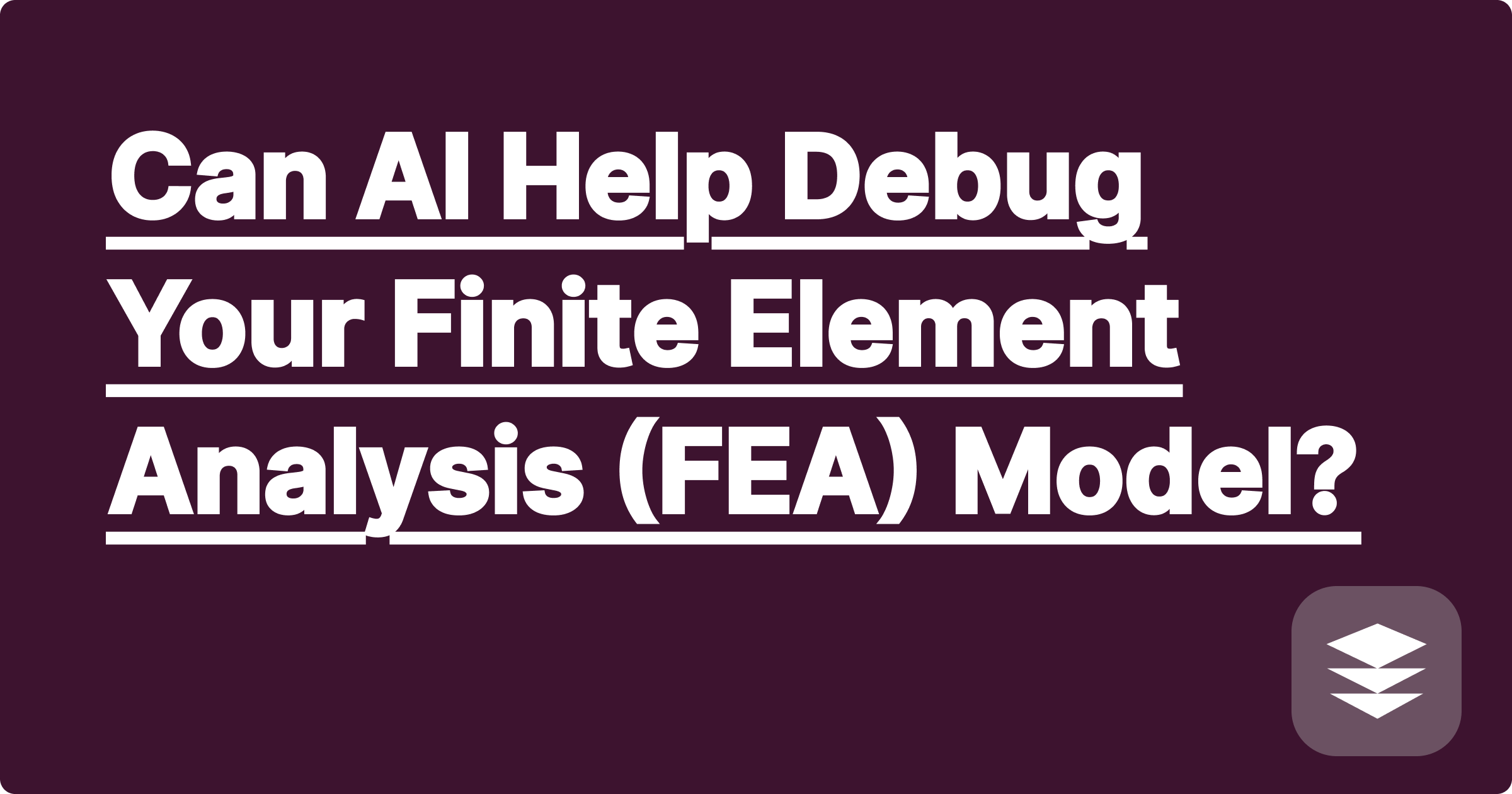
Finite Element Analysis (FEA) is an incredibly powerful tool for any engineer. It allows you to simulate stress, strain, and deformation in complex geometries. However, it can also feel like a "black box." You input your geometry, loads, and constraints, and the software gives you a colorful plot. But is that plot correct? When the results look strange—or when the simulation fails to converge altogether—how do you know where you went wrong? The fea simulation check is often the hardest part of the process.
The problem is that an error can come from many different sources:
You need a way to systematically verify fea results against first principles.
While an AI can't read your ANSYS or Abaqus log file, it can do something arguably more valuable: it can act as your personal engineering consultant to sanity-check your theoretical setup. A solver like GPAI Solver can be your partner in this debugging process.
The Debugging Workflow:
[Image: A screenshot showing a user's text prompt describing their FEA setup to GPAI Solver. The AI's response provides the theoretical formula for stress and a calculated "ballpark" answer for comparison. Alt-text: A user performing an FEA simulation check with an AI solver.]
This process forces you to step back from the software and think like an engineer again. It connects the colorful plots on your screen back to the fundamental equations you learned in your mechanics of materials class. This is the key to not only debugging your model but also building a deep, intuitive understanding of what the simulation is actually doing.
As you learn, use GPAI Cheatsheet to act as your note taker. Every time you solve a problem, add a note to your personal cheatsheet. For example: "FEA Best Practice: Always refine the mesh near stress concentrations like holes or fillets." Over time, you'll build an invaluable guide for all your future simulation work.
A: No. It has no knowledge of your software's user interface. Its purpose is to help you debug the engineering problem, not the software problem. It helps you answer "Are my assumptions correct?" which is usually the source of the error.
A: A powerful AI solver is extremely reliable for classic, textbook engineering formulas. It shows its work, so you can see exactly which formula it used and the numbers it plugged in, allowing you to verify its process completely.
Stop blindly trusting your FEA results. Use an AI assistant to build your confidence and verify fea results against the solid foundation of engineering theory. This will make you a more insightful, effective, and reliable analyst.
[Debug your simulations with confidence. Use GPAI Solver to check your theoretical setup and verify your results. Sign up for 100 free credits.]
An AI-Powered Guide to Digital Logic Design and K-Maps
Mastering Your Microelectronics Course with an AI Op-Amp Solver
How to Use AI for Your Chemical Reaction Engineering Calculations
A Smarter Way to Analyze Pedigrees and Genetic Crosses with AI
From Lab Data to Perfect Graphs: Your AI Lab Report Assistant
How to Create the Ultimate MCAT Cheatsheet for Bio & Biochem with AI
Surviving Your FE Exam Prep with an AI-Generated Formula Sheet
How to Solve Your Economics Homework with an AI Graphing Tool
Can AI Help Debug Your Finite Element Analysis (FEA) Model?
The Best Way to Organize and Summarize Your Computer Networking Notes